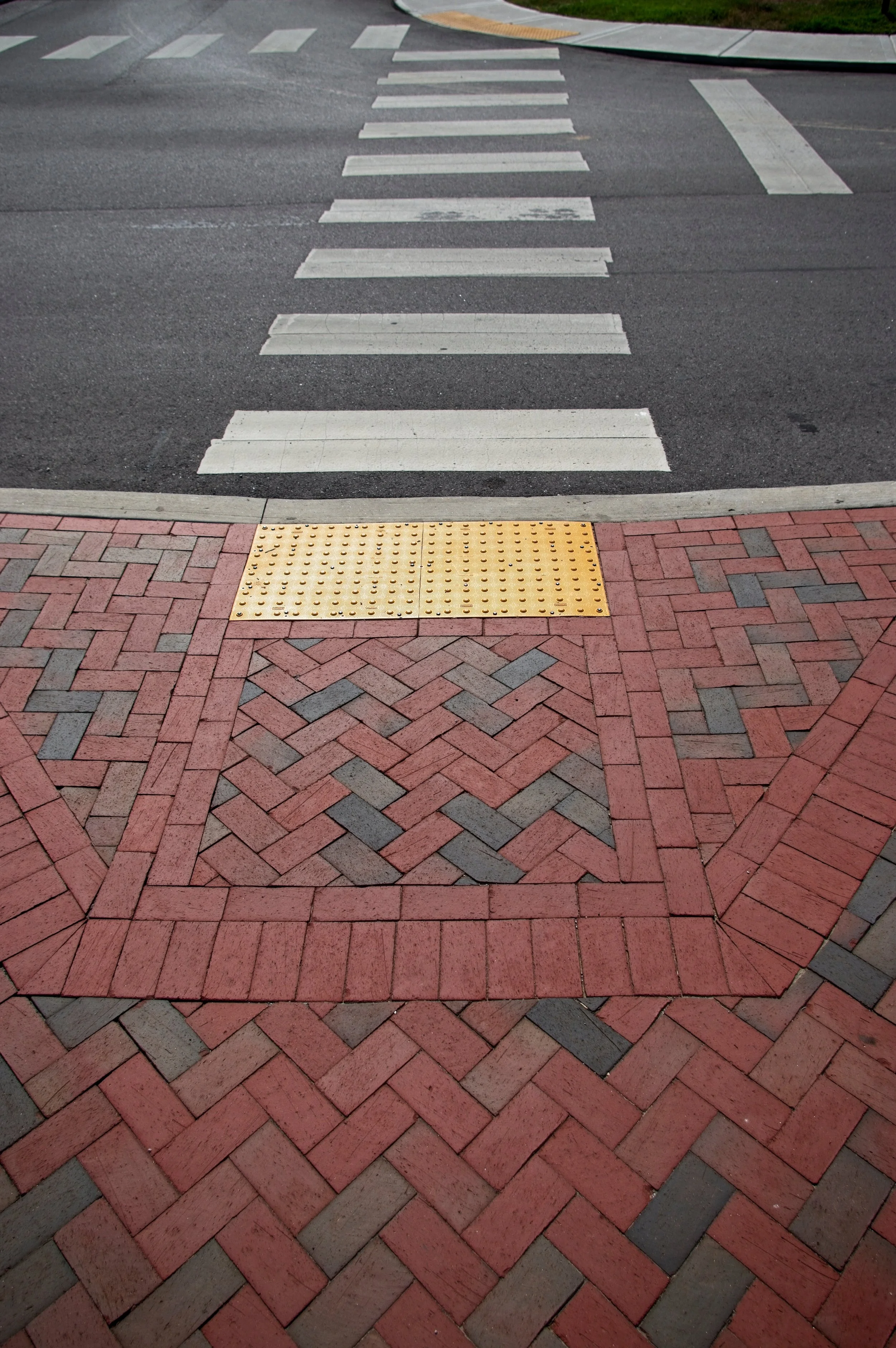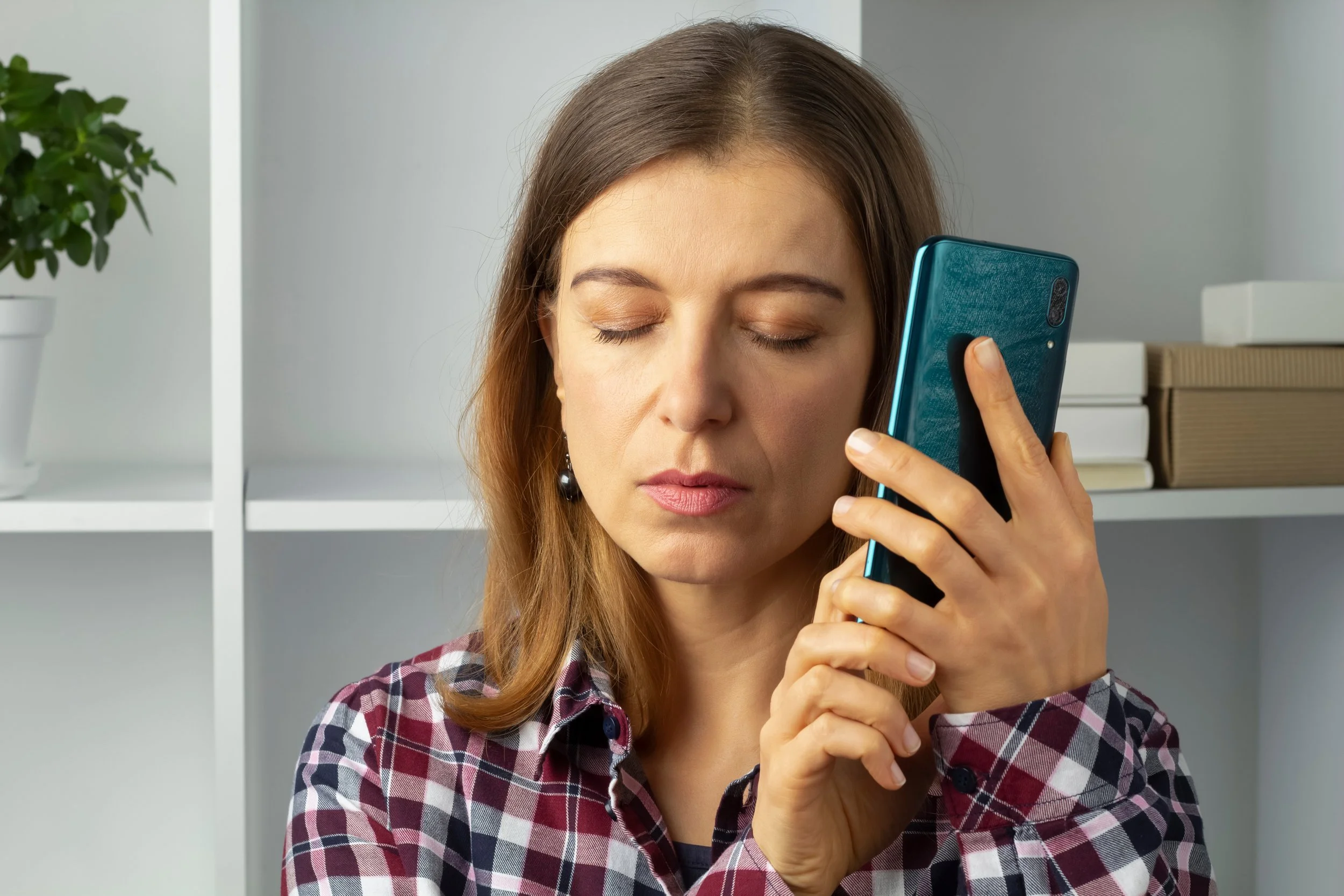Public Accommodations in Colorado: Progress in Motion
Image: A pink sign in the grass points toward a step-free route and has an icon of a person in a wheelchair.
Across Colorado, a shift is taking place, one rooted in dignity, access, and the unwavering belief that everyone should have access to public life. From courthouses to classrooms, digital platforms to neighborhood cafés, new laws and community-led advocacy initiatives are opening more doors, literally and figuratively, for people with disabilities.
At the heart of this momentum is a vision of inclusion that goes beyond compliance. It’s about creating a world where accessibility is not an afterthought, but a norm. Where rights are not continuously fought for, but acknowledged and honored. And where people with disabilities are recognized not by limitations, but rather as equal and by their unique contributions to society and public life.
What Do Accommodations Look Like?
Colorado has made progress at increasing public accommodations. Today, improvements and efforts have led to an array of changes that increase everyday accessibility, including:
Physical accessibility features such as widened curb ramps, accessible parking, and building entrances that are accessible, some using universal design standards.
Communication accessibility improvements, including closed captions, assistive listening systems, braille signage, and high-contrast and large-print materials.
Sensory-aware environments such as quiet lounges, priority seating, and staff trained to respond effectively to trauma-sensitive interactions
Image: A person walks with their service dog down a hallway. The dog wears a yellow “Canine Companions” vest.
Website and digital service accessibility, including screen reader compatibility, keyboard navigation, and plain language content, now required by Colorado law (HB21-1110)
Policy adjustments such as permitting service animals in more places, extending testing times, simplifying intake forms, and flexible options in workplaces tailored to individual needs.
These accommodations are tools of inclusion. When offered consistently, they shift communities from passive accessibility toward active belonging and participation.
For a deeper look at the full range of accommodations available, check out our earlier post: An Overview of Accommodations for People with Disabilities
Building on a Legacy of Access
Colorado’s leadership in expanding public accommodations builds on more than three decades of hard-won civil rights protections. Since the signing of the Americans with Disabilities Act in 1990, and Colorado’s continued commitment to equity, local advocates have helped reshape what public life looks like for people with disabilities. From the earliest independent living efforts in Boulder to more recent drives for digital inclusion, our state has become a proving ground for what access can and should mean today.
A New Legal Landscape
In just the past two years, Colorado has passed several groundbreaking laws that strengthen public accommodation rights and set an example for what inclusive policy can look like.
One of the most impactful is the Remedies for Persons with Disabilities Act (HB23-1032), which gives people a clearer, more direct path to justice when they experience discrimination in public spaces. Individuals can now go straight to court and seek not only compliance but meaningful remedies. This is an affirmation that when accessibility is denied, people have power. Prior to this Act, people with disabilities seeking justice for discrimination had limited legal options, incredible administrative hurdles, and very few remedies - typically only court orders or statutory fines.
Building on that foundation, HB25-1239, the Colorado Anti-Discrimination Act (CADA), signed into law in May 2025, expands the window for filing complaints and adds new layers of protection for individuals with disabilities. It also offers businesses the opportunity to make good-faith corrections, turning enforcement into an opportunity for growth and collaboration. CADA considers disability a “protected characteristic,” thereby further restricting discrimination based upon disability at work, with landlords and other housing, and in public places.
These updates make Colorado’s laws among the most forward-thinking in the country.
And accessibility isn’t limited to the physical world. Thanks to Colorado’s HB21-1110, Colorado Laws For Persons With Disabilities, state and local government websites are now required to meet digital accessibility standards, ensuring that public services are truly open to all, regardless of whether a person uses a screen reader, keyboard navigation, or another assistive technology.
Access in Action: Boulder’s Safer, More Accessible Crossings
In 2024, the City of Boulder completed three major crosswalk improvement projects at Aurora Avenue and Evans Drive, Colorado Avenue east of 33rd Street, and 15th Street and Iris Avenue. These were funded through a Denver Regional Council of Governments grant as part of their community-driven mobility plan. These upgrades included flashing lights, ADA-compliant curb ramps, concrete curb extensions to shorten crossing distances, and improved signage, all informed by community input and a clear commitment to safety and inclusion.
Image: A brick sidewalk ends at the street with an accessible curb cut.
For people with disabilities, these upgrades are transformative. A visually impaired resident described how the flashing lights and tactile cues now provide confidence and clarity when crossing busy streets. Seniors with mobility aids and parents pushing strollers also noted that the widened ramps and predictable curb structure make navigating public space smoother and safer. These accessible crosswalks were designed with the experiences of diverse users in mind.
When a city brings inclusion as a focus in its infrastructure planning, mobility becomes independence. In Boulder, what began as a series of re-striped lines and modified curbs has blossomed into accessibility for all, making it possible for more people to walk, wheel, or roll with dignity and ease.
Expanding Access Online: Digital Inclusion in Practice
After HB 21‑1110 became law, requiring all state and local government websites in Colorado to meet digital accessibility standards, several municipalities ramped up their efforts to reimagine public-facing online services. One standout example is the City of Colorado Springs, which has taken a systematic and public approach to making its digital platforms accessible to all residents.
The City’s Web Accessibility Transition Plan involves auditing websites and documents, training staff, and establishing an accessibility grievance process, all aimed at meeting WCAG 2.1 AA compliance by mid‑2025. The Office of Accessibility regularly publishes quarterly progress reports outlining what’s been remediated and what remains in the queue
Image: A blind woman listens to the screen reader on her smartphone.
These steps mean that public feedback forms, event portals, and planning documents, previously inaccessible to users reliant on screen readers or keyboard navigation, are being rebuilt with inclusion in mind. Users can now participate in community planning, city services, and local governance activities using accessible digital tools. Previously, only those who could navigate PDFs or visual interfaces were able to participate in such municipal meetings.
Far from being a checklist exercise, this accessibility effort reflects a broader cultural shift. It says clearly: public engagement is no longer a privilege for a few, it’s a right for everyone. Accessibility isn’t just about meeting legal standards; it’s about opening doors to civic participation, belonging, and independence.
Advocacy that Moves the Needle
CPWD’s Systems Advocacy team works alongside lawmakers and community partners to help shape policy that reflects the real lives of the people we serve. We offer training and education to local businesses and public agencies on everything from disability etiquette to Universal Design. We provide resources to help individuals understand their rights, file complaints, and advocate for themselves with confidence. Learn more about our systems advocacy work here.
We’re seeing small businesses make simple but meaningful changes in accessibility to become more welcoming to all customers. We’re seeing local governments update their digital platforms to meet the needs of all users. We’re seeing increased clarity around school and trade testing accommodations, lowering barriers to performance for people needing accommodations for educational and professional achievement.
We’re seeing the Independent Living Philosophy in action, with people with disabilities leading the way, shaping the systems that affect their lives, and reminding us all that inclusion is both a right and a responsibility.
Looking Forward
The road to access has always been paved by people who believe in a better future and are willing to work for and advocate for it. The truth is, accessibility, overall, is improving. Public spaces are becoming more welcoming. Systems are becoming more responsive and accessible. And thanks to the tireless work of advocates, allies, and legislators, the rights of people with disabilities are not only being recognized, they’re being strengthened.
There’s more work ahead, of course. But for now, let’s celebrate the progress we’ve made. Because every time a new law is signed, a barrier is removed, or a person is empowered to claim their rightful place in public life, we move closer to a world where everyone can belong, participate, and thrive.





